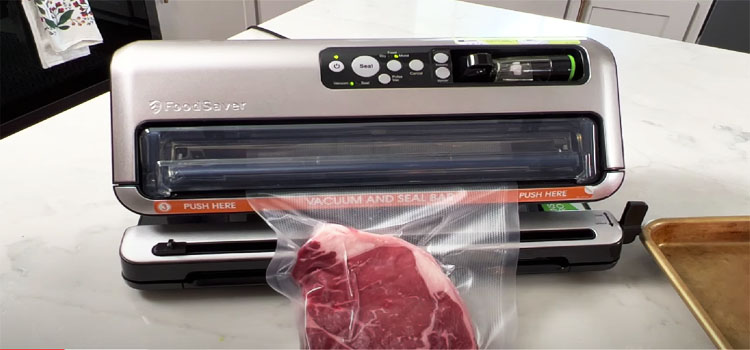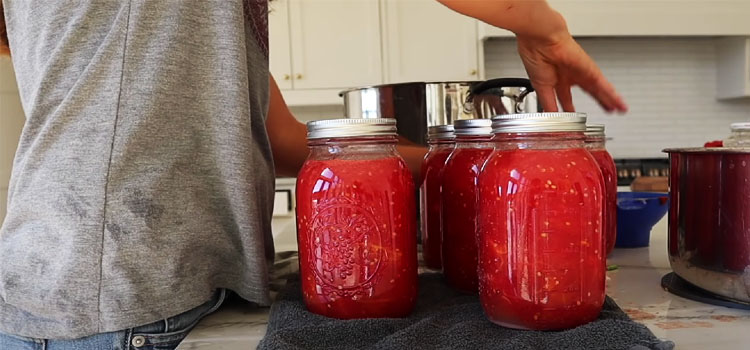Last Updated on September 15, 2024 by Shari Mason
Wondering if vacuum sealing and canning **keep food fresh** the same way? **Both methods are awesome** for longer storage, but are they **really similar**? Vacuum sealing removes air, keeping food fresh by removing oxygen, which causes spoilage. Canning heats food in jars to kill bacteria before sealing. Though they share the same goal, their **main methods differ**. Vacuum sealing works great for leftovers, while canning’s amazing for storing seasonal goodies for months. Fun fact: Vacuum-sealed food can last 3-5 times longer than regular storage! If you’re picking between the two, consider what type of food and storage duration you need. **Canning requires more work** but gives a longer shelf life. Explore the cool world of food preservation to find out which method fits you best!
Let me share my experiences so you’ll get a clear idea of how vacuum sealing and canning take separate paths to keep your food delicious and safe for longer.
Is Canning Similar To Vacuum Sealing?
No. Vacuum sealing and canning might seem similar, but they’re distinct methods for food preservation.
Vacuum sealing involves removing air from a package to prevent spoilage. It’s effective for certain types of food, especially those with low moisture content.
“I eat only vegetables and fruit, and to me, it’s the most aspirational diet because it’s so easy. The cooking I do is quite simple.”
– Vivienne Westwood, Fashion Designer
On the other hand, canning uses heat to seal food in airtight containers, typically jars. This method extends the shelf life of a broader range of foods, making it a popular choice for items like jams, sauces, and vegetables.
So, while both techniques aim to keep food fresh for longer, they employ different strategies to achieve that goal, each with unique advantages. But how long does it take for canning jars to seal?
What’s Vacuum Sealing All About?


Vacuum sealing [1] is a preservation technique around the art of air removal. The air is extracted using a vacuum sealer machine by placing food items in specially designed vacuum-sealing bags or rolls.
This absence of air slows down the deterioration process, curbing the growth of spoilage-causing microorganisms.
The tightly sealed package shields the food from external factors that could compromise its quality, making vacuum sealing an efficient way to keep ingredients fresher for extended periods.
Read:
- Do Jars Have To Be Fully Submerged When Canning?
- Can I Can Without A Pressure Cooker?
- Can You Water Bath Can In A Regular Pot?
- What To Do If Canning Lids Don’t Pop?
- How To Get Rust Off Mason Jar Lids?
How Does Canning Work?
Canning [2] is a preservation process that employs a combination of heat and sealed containers to extend the shelf life of food.
The food, often placed in glass jars, is heat-processed to eliminate harmful bacteria and enzymes that can lead to spoilage.
As the jars cool, a vacuum seal forms, ensuring a tight barrier against air and contaminants.
Are The Equipment & Techniques Similar?
While both vacuum sealing and canning involve the concept of sealing, their equipment and techniques differ significantly.
Vacuum sealing employs specialized machines to extract air and seal plastic bags or rolls.
Canning, however, utilizes glass jars, metal lids, and a heat-processing procedure to create a vacuum seal as jars cool.
What About Food Types For Canning Or Vacuum Sealing?


Regarding food types, vacuum sealing and canning cater to different preservation needs. Vacuum sealing is ideal for preserving foods you plan to consume relatively quickly.
It’s an excellent choice for marinated meats, cheeses, and other items you might enjoy within a shorter timeframe.
On the other hand, canning shines when it comes to extending the shelf life of various foods for the long haul.
Fruits, vegetables, sauces, and even soups find their way into glass jars for canning, ensuring they remain safe and flavorful over extended periods on your pantry shelves.
Which Method Is Best For Me?
Choosing between vacuum sealing and canning depends on your preservation goals and culinary habits.
If convenience and shorter storage periods are your priority, vacuum sealing is your ally. It’s perfect for keeping everyday ingredients fresh and ready for use.
“While both preservation methods share the goal of locking in flavor and freshness, vacuum sealing and canning are distinct culinary companions, each with its techniques and charms.”
– Eat Pallet Restaurant & Food Advice
On the other hand, if you’re planning to stock up on seasonal produce or create pantry reserves, canning is your go-to. It offers the assurance of long-term storage, ensuring that your preserved foods maintain their quality and taste for extended periods.
FAQs
u003cstrongu003eCan a vacuum sealer be used for canning?u003c/strongu003e
No, a vacuum sealer cannot be used for canning. Canning involves a specific heat processing method that requires specialized canning jars and lids to create a vacuum seal as the jars cool. u003cbru003eu003cbru003eVacuum sealers are not designed to withstand the high temperatures and pressures required for proper canning.
u003cstrongu003eDoes vacuum sealing preserve fruit?u003c/strongu003e
Yes, vacuum sealing is an effective method for preserving fruit. The removal of air helps slow the oxidation process, keeping the fruit fresh for extended periods.
In Conclusion
While both vacuum sealing and canning serve the purpose of food preservation, they are distinct methods with their techniques and purposes.
Vacuum sealing focuses on removing air to extend the freshness of foods for shorter periods, providing convenience and efficiency.
On the other hand, canning involves heat processing and vacuum sealing in a specialized jar, offering a reliable way to preserve a wide range of foods for longer durations.
Understanding these differences empowers us to make informed choices based on our preservation needs, ensuring that our culinary endeavors are met with the perfect method for each situation.
References:
- https://www.canr.msu.edu/news/vacuum-sealed-food-what-are-the-food-safety-concerns
- https://www.britannica.com/topic/canning-food-processing
- Can You Put an AC Unit in the Kitchen? - September 27, 2024
- What Cheese Does Olive Garden Use? Discover Their Signature - September 27, 2024
- How to Cancel a Pizza Hut Order? Quick & Easy Guide - September 24, 2024


